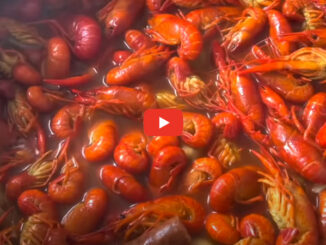Mayeux catching plenty of river crawfish in Honey Island Swamp
As the calendar page turns from February to March, crawfish season is in full swing throughout the Bayou State. And while we certainly had a rocky start to the season due to last year’s drought conditions, the supply chain is slowly catching up as the commercial crawfishing industry works overtime to meet the demand for farm-raised mudbugs.
CJ Mayeux of Pearl River knows a thing or two about catching crawfish.
But he doesn’t focus on ponds. He runs pillow traps in the sloughs of the Honey Island Swamp located along the West Middle Pearl River. And while this spring’s pond-raised crawfish harvest got off to a slow start, Louisiana’s river crawfish are hitting on all cylinders. Mayeux said he catches 6-9 sacks per week running 100 traps every other day, Monday through Friday.
“Oh yeah… it’s been crackerjack this month for me on the West Middle,” he said.
Mayeux was born in Bunkie and caught crawfish as a commercial fisherman in the 80’s. His stomping ground was Bayou Pigeon, and that’s where he learned all about harvesting river crawfish.
Friday’s Ditch
I was able to make a trip with Mayeux to witness firsthand his method of catching multiple sacks of crawfish per week. We started the day at the boat launch in Indian Village on the West Pearl River. Mayeux uses this boat launch because of its easy access to Friday’s Ditch which cuts across the swamp into the West Middle Pearl.
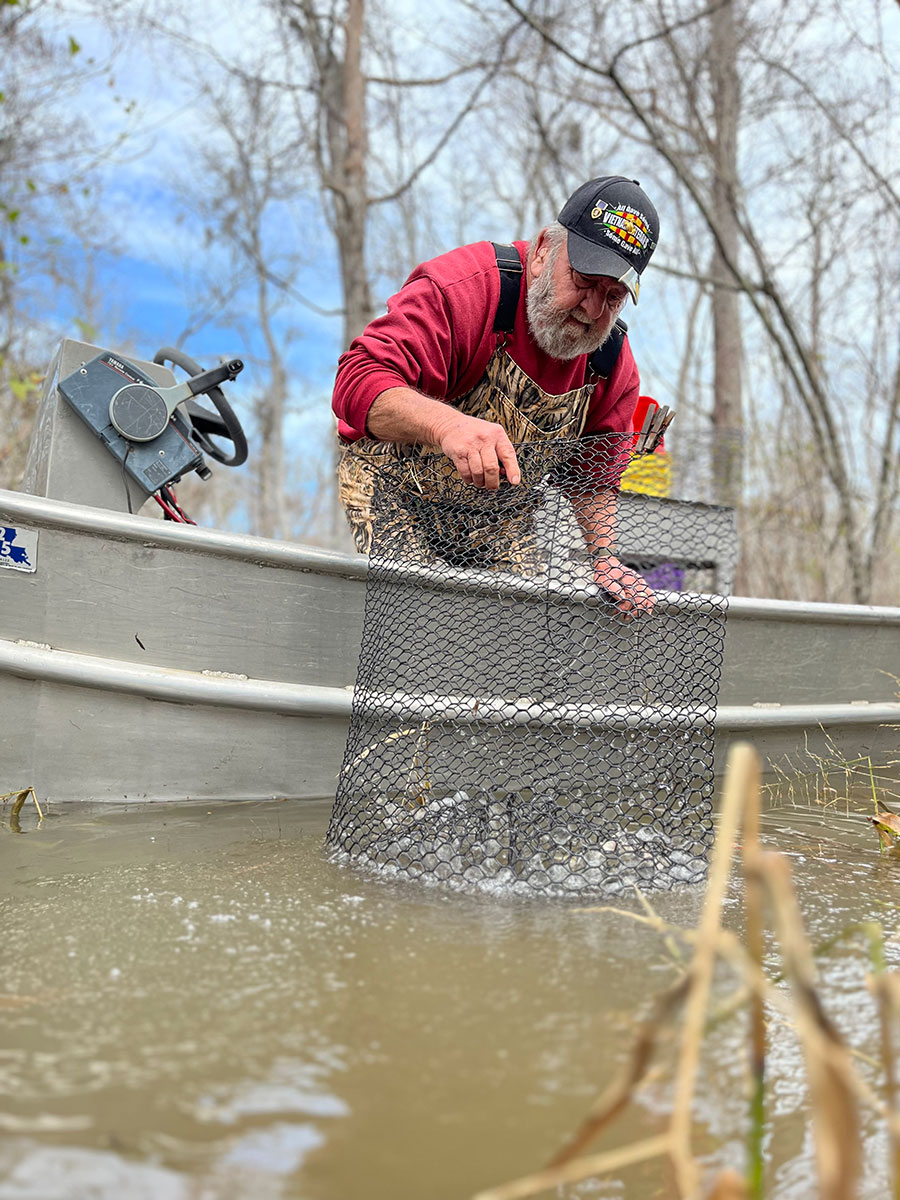
While Fridays Ditch stretches only 600 yards, it may be the most dangerous 600 yards to travel by boat in Southeast Louisiana.
“There’s not many fishermen that I know that will run through Friday’s Ditch,” he said. “Only the guys who were born and raised on the river will make that run.”
While the shortcut was hazardous, it didn’t last long and we entered into the West Middle. Mayeux began to point out sloughs in the swamp that were possible points of entry. He settled on one and pulled his 19-foot custom-made all-aluminum crawfish boat into the narrow trenasse.
Bustin’ lilies
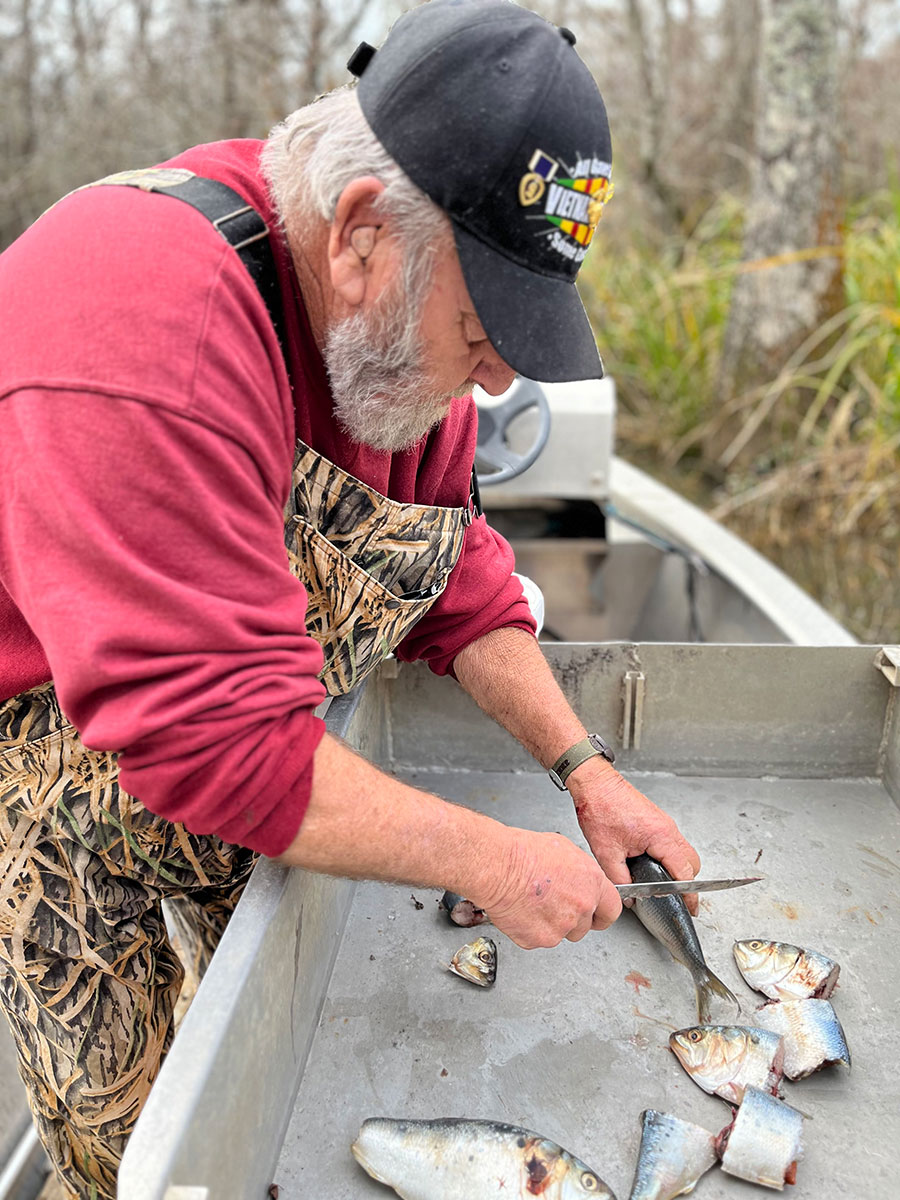
As he maneuvered through the slough, the boat bumped into numerous cypress trees that lined the aqua trail. Mayeux then pointed out a cypress tree with about five feet of hyacinth spread around it. As he approached the tree his boat plowed through the hyacinth like a hot knife through butter. Mayeux told me that two custom features on his boat allow him to do this.
“When I had this boat made, I got them to add a special compartment in the bow where I can pull a plug and let water into it,” he said. “This adds extra weight to the bow so it doesn’t ride up on top of the lilies.”
Then he told me to reach over the bow and feel the blade that ran down the nose of the boat. I did so and felt a solid aluminum blade about the width of a No. 2 pencil that extended two inches out.
“That blade busts lilies like nobody’s business,” Mayeux said.
Bait em’ up and let em’ hang
After getting situated, he began to load his first trap with bait. Mayeux uses a log of processed crawfish bait called Cajun World Crawfish Bait made by Purina as well as using cut pogeys.
“The processed bait gives off a lot of scent right away and attracts crawfish quickly — but it dissolves fast — that’s why I put the fish in there,” he said. “The pogeys hold the crawfish because it takes them more time to eat the fish.”
After he fastened the pillow trap shut with a clothespin, he tied the line to the trunk of a cypress tree and lowered it down into the water. He placed the trap at a 45-degree angle.
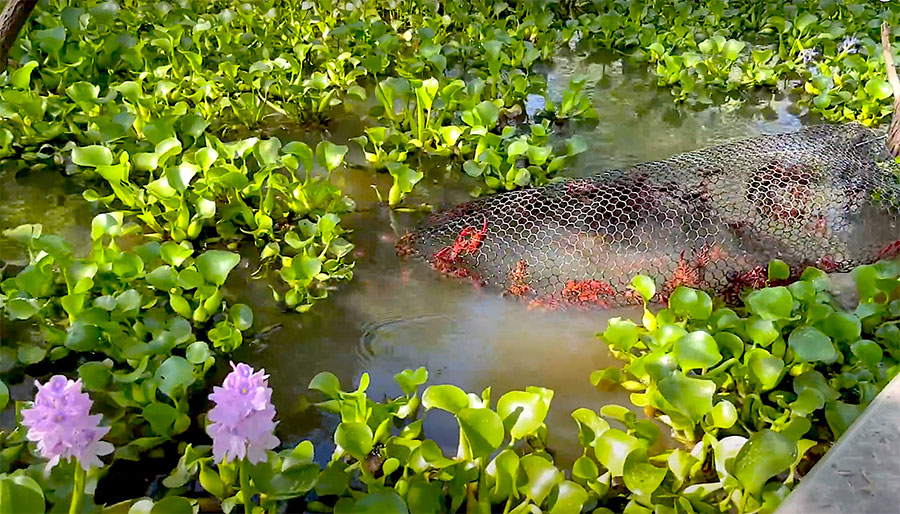
“These traps aren’t made to lay flat,” he said. “If you lay them flat the crawfish won’t be able to get in because the openings are about 6 inches off of the bottom. When the trap is placed at a 45-degree angle, the ramp to the openings are touching the bottom and the crawfish can climb up the ramp and enter the trap.”
Mayeux repeated the process setting 30 traps along a slough that meandered through the swamp.
“I’ll let them soak the rest of today and tomorrow — so about every other day I empty and rebait them,” he said.
Mayeux started setting his traps in February and said he only caught a handful per trap in that colder month. But this month his area in the Honey Island Swamp is producing a sack for every 20 traps. Mayeux said the season will only continue to improve as the weather warms where he will catch a sack for every 10 traps.
Year-round crawfish boil
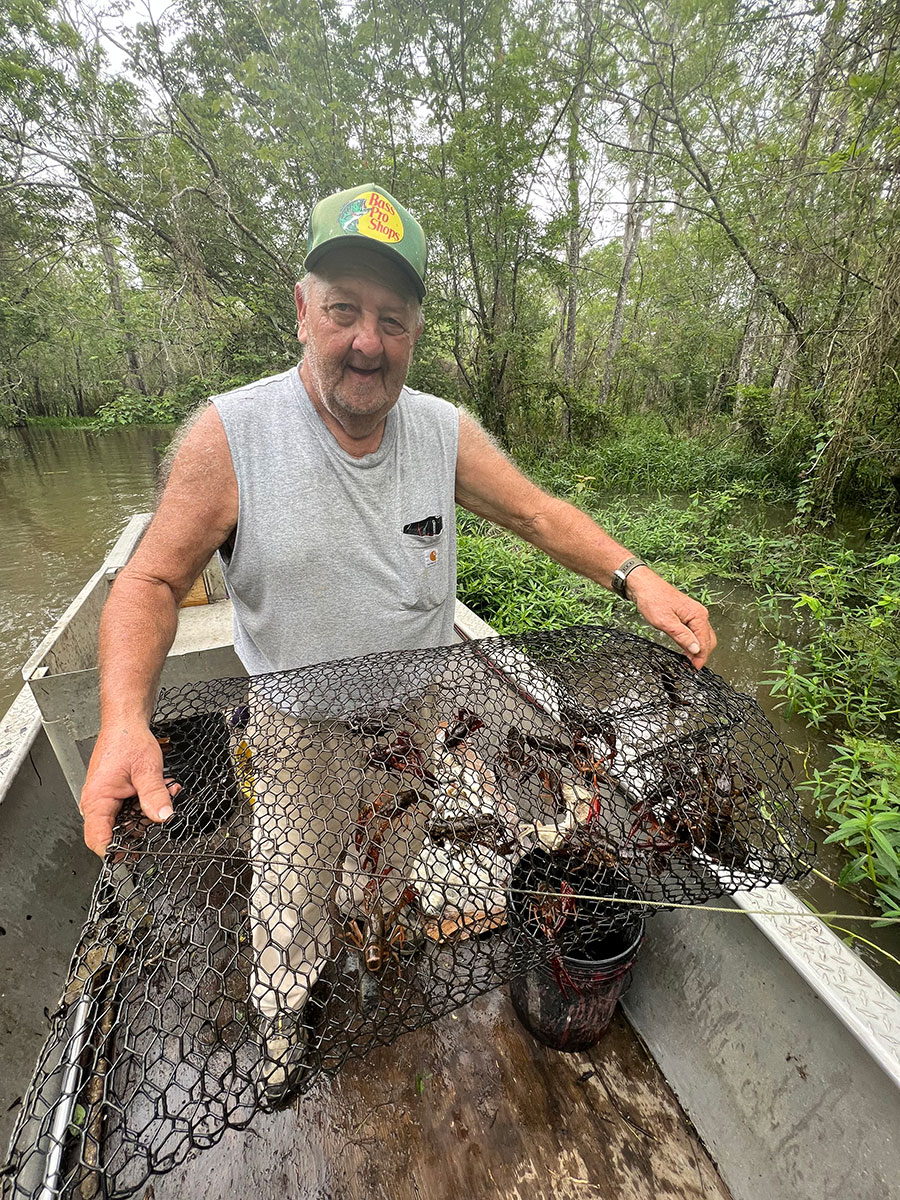
While crawfish season typically stretches from mid-January to June, Mayeux has found himself craving boiled mudbugs during the fall and early winter months. After many years of trial and error, he has devised a method for enjoying boiled crawfish year-round.
During crawfish season when he’s boiling crawfish almost weekly, he uses a gallon-sized raw oyster container and scoops out enough boiled crawfish to fill it. He then puts the water from the boil into the container before placing it in his freezer. When he’s ready to enjoy boiled crawfish during the off-season he simply splashes a little warm water on the outside of the container and lets the crawfish slip out into the boiling pot where he fires up the burner and melts the frozen block of crawfish. Mayeux said this method provides hot steaming crawfish year-round, but he warns not to let the water get too hot.
“Don’t let the water get to boiling because it will ruin the meat,” he said.
Mayeux also recommends using wild-caught river crawfish when going the frozen route, as the reheating changes the texture of pond-raised crawfish.
Mayeux said there are numerous areas similar to the Honey Island Swamp across Louisiana that will produce sacks of crawfish for recreational fishermen this month. The Atchafalaya Basin and the Bonnet Carre’ Spillway are two hotspots that offer miles of flooded swamp in March.
“Just look for areas where there’s water in the woods and try it out,” he said. “If that water is warm enough, you’re probably going to catch some bugs.”
